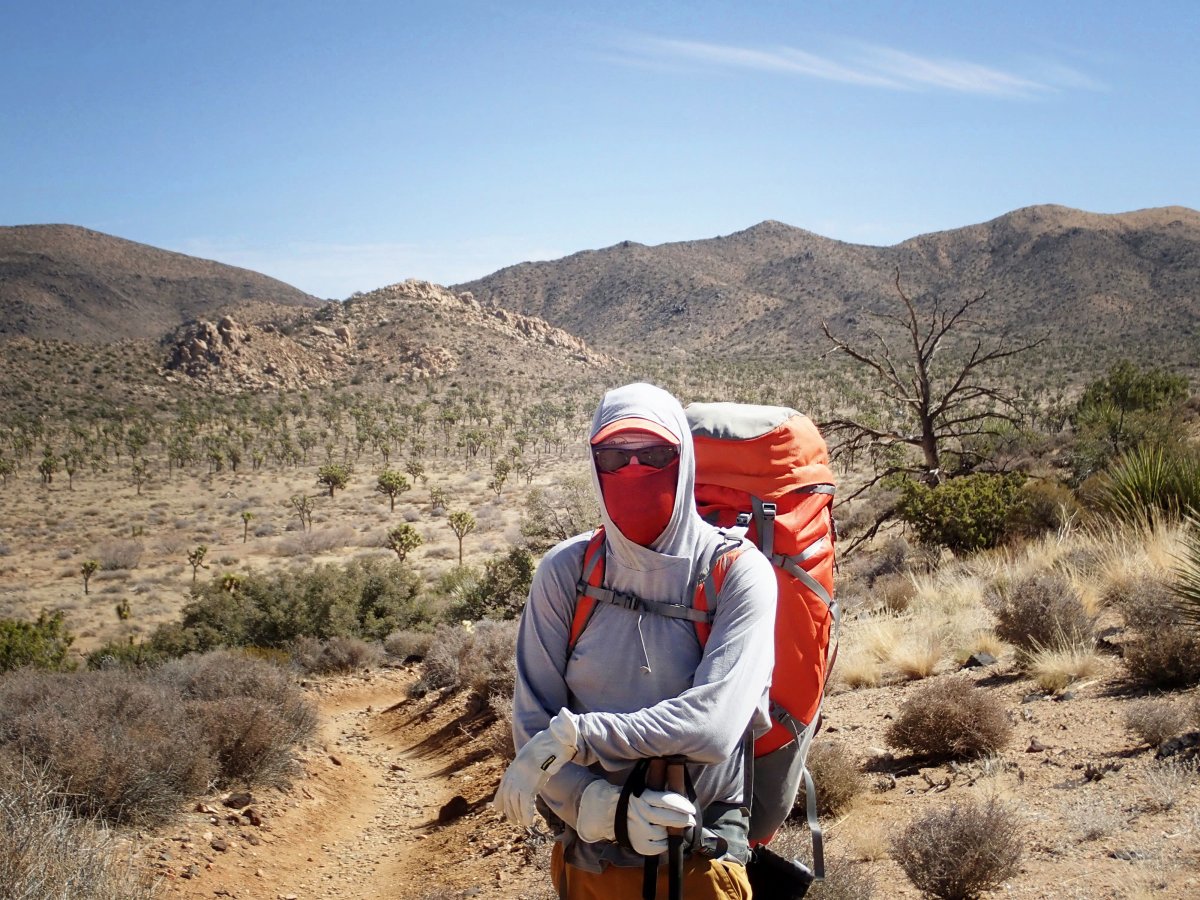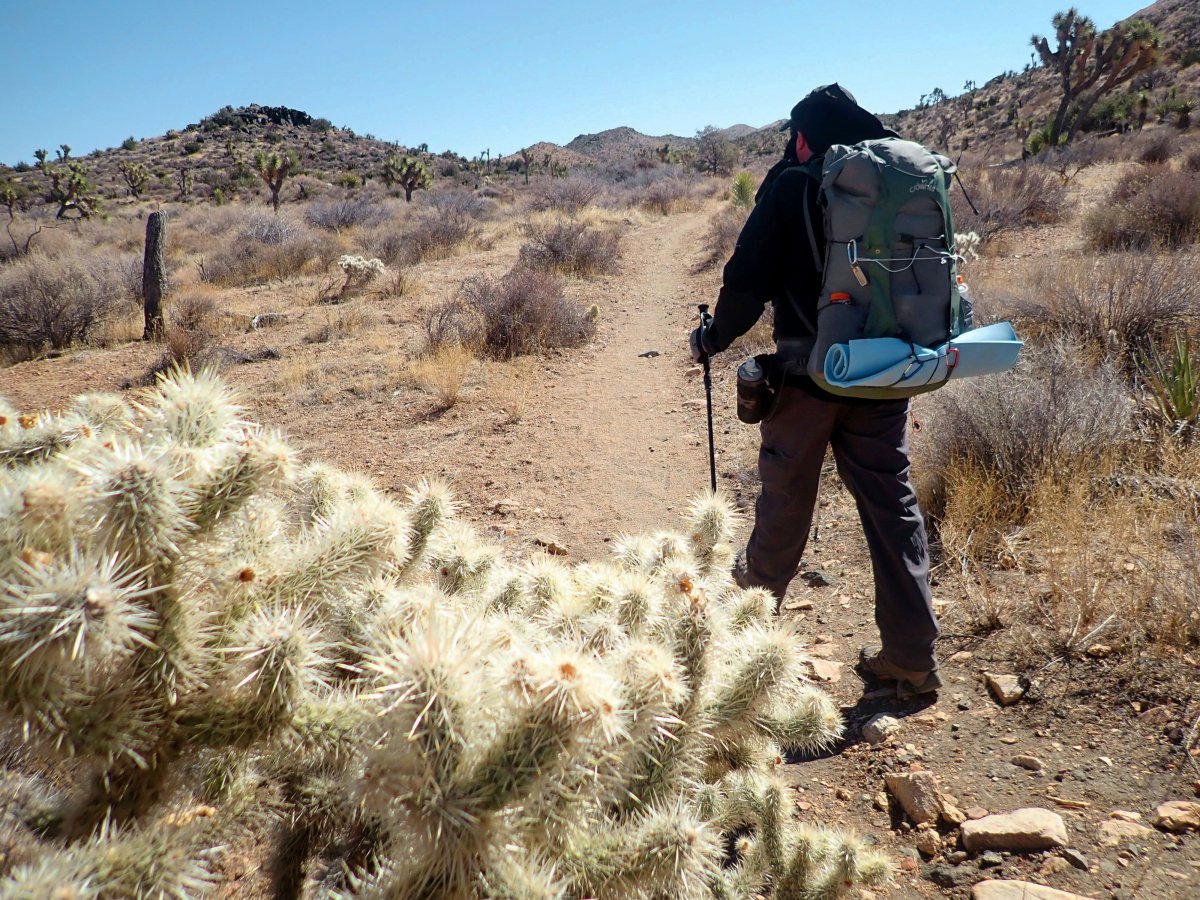Desert Hiking 101 - How to be Prepared

Regge sporting proper attire for desert backpacking and robbing banks!(or avoiding others) by Bernie Fox

The Joshua Tree cholla are waiting for hikers by Regge Bulman
By Regge Bulman, WTC Newsletter editor, M-rated mountaineer and outings leader and WTC Assistant Group leader, West LA



Comments
Linda Fox (not verified)
March 30, 2021 - 6:28pm
Permalink
Awesome article
Add new comment